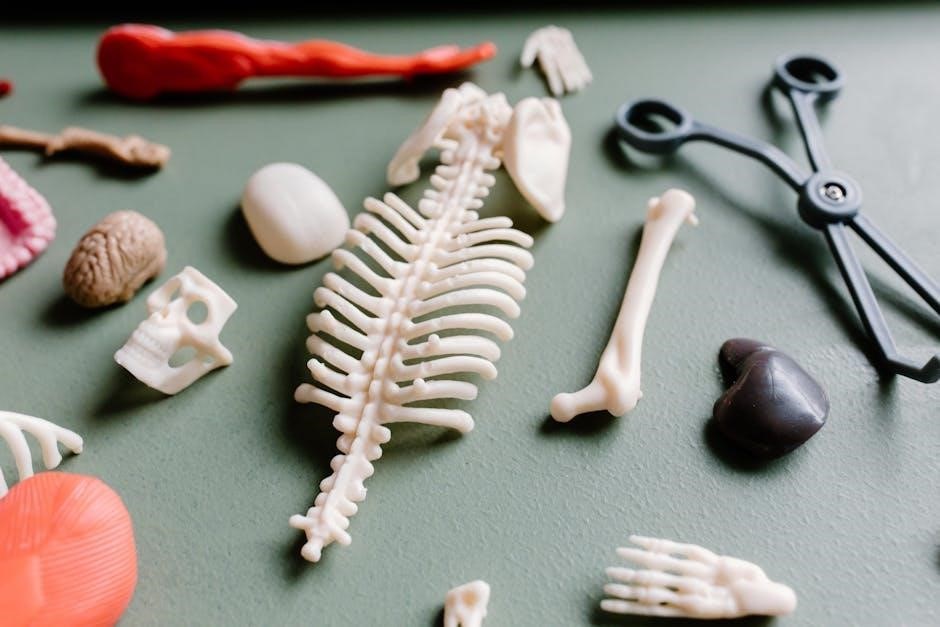SCHMETZ sewing machine needles are globally recognized for their precision and quality, offering a wide range of types and sizes to suit various fabrics and sewing needs.
Overview of Schmetz Sewing Machine Needles
SCHMETZ sewing machine needles are renowned for their exceptional quality and precision, catering to a wide range of sewing needs. Available in various types and sizes, they are designed to accommodate different fabrics, from delicate materials to heavy-duty textiles like denim. The needles feature a color-coded system, where the top band indicates the needle type, and the bottom band denotes the size, making identification quick and easy. SCHMETZ needles are compatible with most household and industrial sewing machines, ensuring versatility for crafters and professionals alike. Their flat shank design prevents incorrect insertion, while specialized options like stretch and metallic needles address specific sewing requirements. This versatility makes SCHMETZ a trusted choice for seamless sewing experiences.
Importance of Choosing the Right Needle
Choosing the right SCHMETZ needle is crucial for achieving optimal sewing results. Using the wrong needle can lead to thread breakage, uneven stitching, and even damage to the fabric or machine. The right needle ensures smooth stitching, prevents fabric damage, and enhances the overall quality of the sewn product. SCHMETZ needles are designed with specific features, such as color-coded bands for easy identification, to help users select the appropriate type and size for their project. This attention to detail ensures compatibility with various fabrics and sewing tasks, making SCHMETZ a reliable choice for both beginners and experienced sewists. Proper needle selection is the foundation of a successful sewing experience.

Understanding Schmetz Needles
SCHMETZ needles are renowned for their precision engineering and durability, featuring color-coded bands for easy identification of type and size, ensuring optimal performance across various sewing applications.
Anatomy of a Schmetz Sewing Machine Needle
A Schmetz sewing machine needle is precision-engineered with distinct components, each serving a specific function. The needle consists of a shank, blade, groove, eye, point, tip, and scarf. The shank is the part inserted into the sewing machine, while the blade determines the needle’s thickness and strength. The groove guides the thread, ensuring smooth stitching. The eye is the opening through which the thread passes, varying in size depending on the needle type. The point and tip determine the needle’s suitability for different fabrics, with sharper points for heavier materials. The scarf, a small indentation near the eye, helps form the stitch loop. Understanding these parts helps in selecting the right needle for optimal sewing performance.
Color Coding on Schmetz Needles
Schmetz sewing machine needles feature a color coding system to simplify identification. The top color band indicates the needle type, such as universal, stretch, or denim, while the bottom band denotes the needle size. For example, a red top band signifies a stretch needle, and a green bottom band represents a size 70/10. This system allows sewists to quickly identify the correct needle for their project without confusion. The color coding enhances efficiency and ensures the right needle is selected for specific fabrics and tasks. This intuitive system is a hallmark of Schmetz needles, making them user-friendly for both beginners and experienced sewers.
Understanding Needle Sizes and Types
Schmetz needles are categorized by size and type, ensuring optimal performance for specific fabrics and tasks. Needle sizes are dual-numbered, such as 70/10, where the first number is the European size and the second is the American size. Larger numbers indicate thicker needles, suitable for heavier fabrics, while smaller numbers are for lighter materials. Needle types include Universal, Stretch, Jeans, Metallic, and Specialty, each designed for specific uses. Universal needles are versatile for general sewing, while Stretch needles are ideal for elastic fabrics. Jeans needles penetrate thick materials like denim, and Metallic needles handle metallic threads. Understanding these distinctions helps sewists choose the right needle for their projects, ensuring precise stitching and fabric compatibility.
Types of Schmetz Needles
Schmetz offers Universal, Stretch, Jeans/Denim, Metallic, and Specialty needles, each designed for specific fabrics and sewing tasks, ensuring precise stitching and optimal performance.
Universal Needles
Schmetz Universal Needles are versatile and suitable for a wide range of fabrics, including cotton, polyester, and blends. They feature a sharp point and rounded eye, making them ideal for general sewing tasks. The needles are color-coded for easy identification, with the top band indicating the needle type and the bottom band showing the size. Available in sizes ranging from 70/10 to 120/19, Universal Needles are a popular choice for their adaptability and reliability. They are designed to work seamlessly with most household sewing machines and are perfect for both beginners and experienced sewists. Their durability and consistent performance make them a must-have for everyday sewing projects.
Stretch Needles
Schmetz Stretch Needles are specifically designed for sewing elastic fabrics such as swimwear, knits, and velour. They feature a unique medium ballpoint tip that gently pierces the fabric without causing runs or damage. The needle’s scarf ensures smooth loop formation, reducing skipped stitches. Color-coded for easy identification, the top band indicates the needle type (stretch), while the bottom band shows the size. Available in sizes 70/10 to 90/14, these needles are ideal for stretchy materials and provide consistent results. Their specialized design minimizes fabric breakage and ensures professional-looking finishes. Perfect for garments requiring elasticity, Schmetz Stretch Needles are a must-have for any sewer working with stretch fabrics.
Jeans/Denim Needles
Schmetz Jeans/Denim Needles are designed for sewing heavy fabrics like denim, canvas, and thick cotton. These needles feature a strong, reinforced blade and a sharp point to penetrate dense materials effortlessly. Available in sizes 70/10 to 110/18, they are ideal for stitching durable seams in jeans, workwear, and upholstery. The needle’s robust construction reduces breakage and ensures clean stitching on thick layers. The color coding system helps identify the needle type and size quickly. These needles are a must-have for projects requiring strength and durability, making them perfect for both home sewers and professionals working with heavy-duty fabrics. Their reliability ensures consistent results on tough materials.
Metallic Needles
Schmetz Metallic Needles are specifically designed for sewing with metallic, lamé, or other specialty threads. These needles feature an elongated eye, which reduces thread stress and prevents breakage. The unique eye shape allows the thread to pass through smoothly, ensuring even stitching. Ideal for decorative sewing, embroidery, and projects requiring shimmering effects, these needles are a favorite among crafters and quilters. The elongated eye accommodates thicker or metallic threads without causing damage. Schmetz Metallic Needles are available in various sizes to suit different thread types and fabric weights. They are a must-have for creating professional-looking results with specialty threads, making them perfect for both home sewers and professionals working on intricate designs. Their durability ensures consistent performance even with challenging materials.
Specialty Needles
Schmetz Specialty Needles cater to specific sewing needs, offering tailored solutions for unique fabrics and techniques. Twin needles create parallel stitching lines, ideal for decorative effects. Topstitch needles have an enlarged eye for heavy threads. Quilting needles feature a strong blade for thick layers, while leather needles have a sharp point for piercing tough materials. Each type addresses particular challenges, ensuring optimal results. These needles enhance creativity and precision in specialized projects, making them indispensable for sewists tackling diverse materials and designs. Their specialized features ensure durability and performance, tailored to meet the demands of specific sewing tasks. Schmetz Specialty Needles are a testament to innovation, providing the right tool for every sewing requirement. They empower sewists to achieve professional-quality results in a wide range of applications.

How to Choose the Right Needle
Selecting the right needle involves considering fabric type, thread weight, and sewing technique. Use color coding to identify needle type and size for optimal performance and results.
Matching Needle Type to Fabric
Correctly matching the needle type to fabric ensures optimal sewing performance. Universal needles suit most general fabrics, while Stretch needles are ideal for elastic materials like knits or swimwear. Jeans/Denim needles, with their sharp points, are designed for thick fabrics like denim or canvas. Metallic needles, featuring an elongated eye, are perfect for metallic or specialty threads. Specialty needles cater to unique fabrics or techniques, such as leather or embroidery. Always refer to the color coding on Schmetz needles to quickly identify the type and size. This ensures the needle is tailored to the fabric, preventing issues like thread breakage or uneven stitching. Proper selection enhances both stitch quality and sewing machine efficiency.
Understanding the Needle Size Chart
The needle size chart is essential for selecting the right Schmetz needle. The chart typically features two numbers: the first represents the distance between needles in twin packs, while the second indicates the European needle size. Needle sizes range from fine (e.g., 60) to heavy-duty (e.g., 100), with larger sizes suitable for thicker fabrics. The groove on the needle, which cradles the thread, varies in depth and length depending on the size. This ensures proper thread guidance and reduces breakage. A printable chart is often available, providing a quick reference for matching needle sizes to fabric types. Understanding this system helps sewists choose the perfect needle for their projects, ensuring smooth stitching and optimal results.
Thread and Needle Compatibility
Thread and needle compatibility is crucial for smooth stitching and preventing thread breakage. Schmetz needles feature an elongated eye in metallic types, reducing thread stress. The groove on the needle guides the thread properly, ensuring even tension. Matching the needle type to the thread ensures optimal performance. For example, metallic needles are designed for specialized threads, while universal needles work well with standard sewing threads. Proper compatibility prevents issues like thread breakage and uneven stitching, ensuring professional-looking results. Always choose a needle that aligns with your thread type and fabric to achieve the best sewing outcomes.

Troubleshooting Common Issues
Common issues like thread breakage or uneven stitching often result from incorrect needle alignment or improper tension settings. Ensure the needle is correctly threaded and aligned for smooth operation.
Broken or Bent Needles
A broken or bent needle can cause sewing machine malfunction, uneven stitching, or thread breakage. Always inspect the needle for damage before use. If a needle breaks, stop sewing immediately to avoid further damage. Bent needles may result from improper insertion or collisions with metal parts. To prevent breakage, ensure the needle is correctly aligned and seated properly. Replace bent or broken needles with a new one of the correct type and size for your fabric. Regularly check needle condition and replace every 8-10 hours of use. Proper handling and storage of needles can also reduce the risk of bending or breaking. Always use the correct tools for needle replacement and follow the manufacturer’s guidelines.
Thread Breakage
Thread breakage is a common issue that can disrupt sewing progress. It often occurs due to incorrect needle size, improper threading, or excessive tension. Using a needle with a groove that doesn’t match the thread type can cause friction and lead to breakage. Ensure the needle’s eye is large enough for the thread to pass smoothly. Check for bends or damage in the needle, as this can also cause thread to snap. Regularly cleaning and lubricating the needle can reduce friction. Adjusting the tension settings on your sewing machine and using high-quality thread compatible with your fabric and needle type can help prevent breakage. Re-threading the machine correctly and replacing worn-out needles can also resolve this issue effectively. Always refer to the needle size chart for guidance.
Uneven Stitching
Uneven stitching can occur due to improper needle alignment, incorrect tension settings, or using a damaged or dull needle. Ensure the needle is correctly positioned and aligned with the machine’s guidelines. Check the tension on both the upper and bobbin threads, as imbalance can lead to uneven stitches. Using the wrong needle type or size for the fabric can also cause this issue. Regularly inspect the needle for signs of wear or damage and replace it if necessary. Adjusting the stitch length and width according to the fabric type can help achieve consistent results. Proper threading and maintaining the correct thread Guides alignment are also essential. Always use high-quality Schmetz needles suitable for your fabric to minimize stitching irregularities.
Needle Not Picking Up Bobbin Thread
If the needle fails to pick up the bobbin thread, ensure the thread guide is properly threaded and aligned. The needle bar thread guide plays a crucial role in directing the thread correctly. Check if the needle is correctly positioned and aligned with the machine’s markings. Use a needle threader to help guide the thread through the needle’s eye, especially for smaller needles. Ensure the thread is not tangled or twisted in the bobbin. If the issue persists, inspect the needle for damage or wear and replace it if necessary. Proper threading and alignment are essential for the needle to consistently pick up the bobbin thread during stitching.

Maintenance and Care
Proper care extends the lifespan of Schmetz needles. Store them in a dry place, using protective cases to prevent damage. Handle needles carefully to avoid bending or breaking.
Proper Storage of Needles
Proper storage is essential to maintain the quality and longevity of Schmetz needles. Store them in a cool, dry place to prevent rust and corrosion. Use protective cases or original packaging to avoid bending or breaking. Keep needles organized by type and size to ensure easy access. Consider using needle packs or organizers with compartments to separate and label different needles. Avoid storing them in humid environments or extreme temperatures, as this can damage the metal. Regularly clean and inspect stored needles before use to ensure they remain in optimal condition. Proper storage helps prevent accidents and ensures your needles remain sharp and functional for your sewing projects.
Cleaning and Lubricating the Needle
Cleaning and lubricating your Schmetz needles is crucial for maintaining their performance and extending their lifespan. Use a soft, dry cloth to gently wipe away dirt, thread residue, or debris from the needle’s surface. For more thorough cleaning, dampen the cloth with mild soap and water, but avoid harsh chemicals or abrasive materials. After cleaning, thoroughly dry the needle to prevent rust. Lightly apply a few drops of sewing machine oil to the needle’s shaft or eye to reduce friction and ensure smooth stitching. Regular cleaning and lubrication help prevent thread breakage and uneven stitching, keeping your needle functioning optimally for all your sewing projects.
When to Replace a Needle
Knowing when to replace your Schmetz needle is essential for maintaining sewing quality and preventing issues like thread breakage or uneven stitching. Replace the needle if it becomes bent, blunt, or shows visible signs of wear. A bent needle can cause misalignment, while a dull one may tear fabric instead of piercing it cleanly. If you notice skipped stitches, inconsistent tension, or excessive thread fraying, it’s likely time for a new needle. Additionally, replace the needle after every 8 hours of continuous use or when switching between vastly different fabrics or thread types. Regular replacement ensures optimal performance and protects your machine from potential damage.
Handling Needles Safely
Handling Schmetz needles safely is crucial to avoid injuries and ensure longevity. Always use a needle threader to avoid finger pricks when threading. Store needles in a protective case or organizer to prevent accidental contact. Keep needles out of reach of children and pets. Avoid touching the sharp tip or eye of the needle, as oils from skin can cause rust. Never handle needles near open flames or in hazardous environments. If a needle is bent or damaged, dispose of it immediately to prevent injury or machine damage. Use a magnifying glass or needle threader for visibility, especially with small sizes. Proper handling ensures safety and maintains needle quality for optimal sewing performance.

Using Schmetz Needles
Thread the needle correctly, using guides to ensure proper alignment. Insert the needle with the flat shank facing backward for accurate stitching. Always follow machine-specific instructions.
Step-by-Step Guide to Threading the Needle
To thread a Schmetz sewing machine needle, start by inserting the needle into the needle bar with the flat shank facing backward. Locate the thread guide on the right-hand side of the machine and pass the thread through it. Gently pull the thread downward to align it with the needle’s eye. Use the take-up lever to guide the thread through the needle bar thread guide. Finally, turn the handwheel to lower the needle slightly, ensuring the thread is properly seated. Always follow the machine’s specific threading instructions for optimal results. Proper threading ensures smooth stitching and prevents thread breakage during sewing.
Aligning the Needle for Proper Stitching
Proper needle alignment is crucial for achieving precise and even stitching with Schmetz needles. The flat shank design ensures the needle is inserted correctly in the needle bar, preventing incorrect positioning. After threading the machine, gently turn the handwheel to align the needle’s position with the machine’s markings. This ensures the needle is at the correct height and angle for optimal stitching. Always check the alignment visually or through the machine’s built-in guides to maintain consistency. Proper alignment prevents issues like uneven stitches and ensures smooth sewing performance. Follow these steps to guarantee your needle is perfectly aligned for every project.
Adjusting Tension for Different Fabrics
Proper tension adjustment is essential for smooth stitching with Schmetz needles. For delicate fabrics like silk or cotton, reduce the upper thread tension to prevent pulling or puckering. For thicker fabrics like denim or canvas, increase the tension to ensure even stitching. Use the thread guide to maintain consistent thread flow and avoid slippage. Always test the tension on a scrap piece of fabric before sewing your final project. Adjusting the bobbin tension may also be necessary for heavy or stretch fabrics. Ensure the take-up lever is correctly positioned to maintain balanced tension. Properly adjusted tension prevents thread breakage and ensures professional-looking results with Schmetz needles.

Accessories and Tools
Essential tools for optimizing Schmetz needle performance include needle threaders, needle bar thread guides, and needle organizers, ensuring seamless sewing and efficient fabric handling.
Needle Threaders
Needle threaders are indispensable tools designed to simplify threading sewing machine needles; They guide the thread through the needle’s eye effortlessly, reducing eye strain and frustration. Compatible with Schmetz needles, threaders are especially useful for fine or specialty needles with small eyes. They work seamlessly with universal, stretch, and metallic needles, ensuring smooth threading. By aligning the thread perfectly, threaders minimize the risk of thread breakage and uneven stitching. Many threaders are compact and portable, making them ideal for sewists on the go. Regular use of a needle threader extends the life of your needles by preventing damage from forced threading. This practical accessory is a must-have for anyone looking to enhance their sewing efficiency and precision with Schmetz needles.
Needle Bar Thread Guide
The needle bar thread guide is a crucial accessory for ensuring smooth thread flow during sewing. It is designed to align and direct the thread from the spool to the needle, preventing tangles and knots. Compatible with Schmetz sewing machine needles, this guide fits securely on the needle bar, cradling the thread in its groove. Its elongated design helps reduce thread stress, especially when using metallic or specialty needles. The guide’s precise alignment ensures consistent stitching and minimizes thread breakage. Regular use of the needle bar thread guide enhances sewing efficiency and maintains the quality of your work. It is an essential tool for both beginners and experienced sewists using Schmetz needles for various fabric types and stitching techniques.
Needle Packs and Organizers
Schmetz needle packs and organizers are designed to keep your sewing supplies tidy and easily accessible. These compact storage solutions are available in various sizes to accommodate different needle types and quantities. Each pack is labeled with needle sizes and types, making it simple to identify and select the right needle for your project. The organizers are portable and can be stored in sewing kits or workspaces, reducing clutter and saving time. They are especially useful for sewists who work with multiple fabric types or specialize in various sewing techniques. By keeping needles organized, you can maintain your workspace efficiently and ensure your tools are always within reach. This practical accessory enhances your sewing experience and helps you stay organized.
Mastering Schmetz needles enhances your sewing experience, ensuring precision and versatility for various fabrics and techniques. Proper maintenance and storage maximize their performance and longevity.
Final Tips for Getting the Most Out of Schmetz Needles
To maximize the performance of Schmetz needles, always match the needle type and size to your fabric and thread. Regularly inspect needles for wear or damage, replacing them every 8-10 hours of use. Store needles in a protective case or organizer to avoid bending or breakage. Use a needle threader for easy threading, especially with metallic or fine needles. Keep a variety of needle types on hand to tackle different projects efficiently. Finally, refer to the Schmetz needle chart for guidance on selecting the right needle for your specific sewing needs. Proper care and selection ensure optimal results and extend needle longevity.
